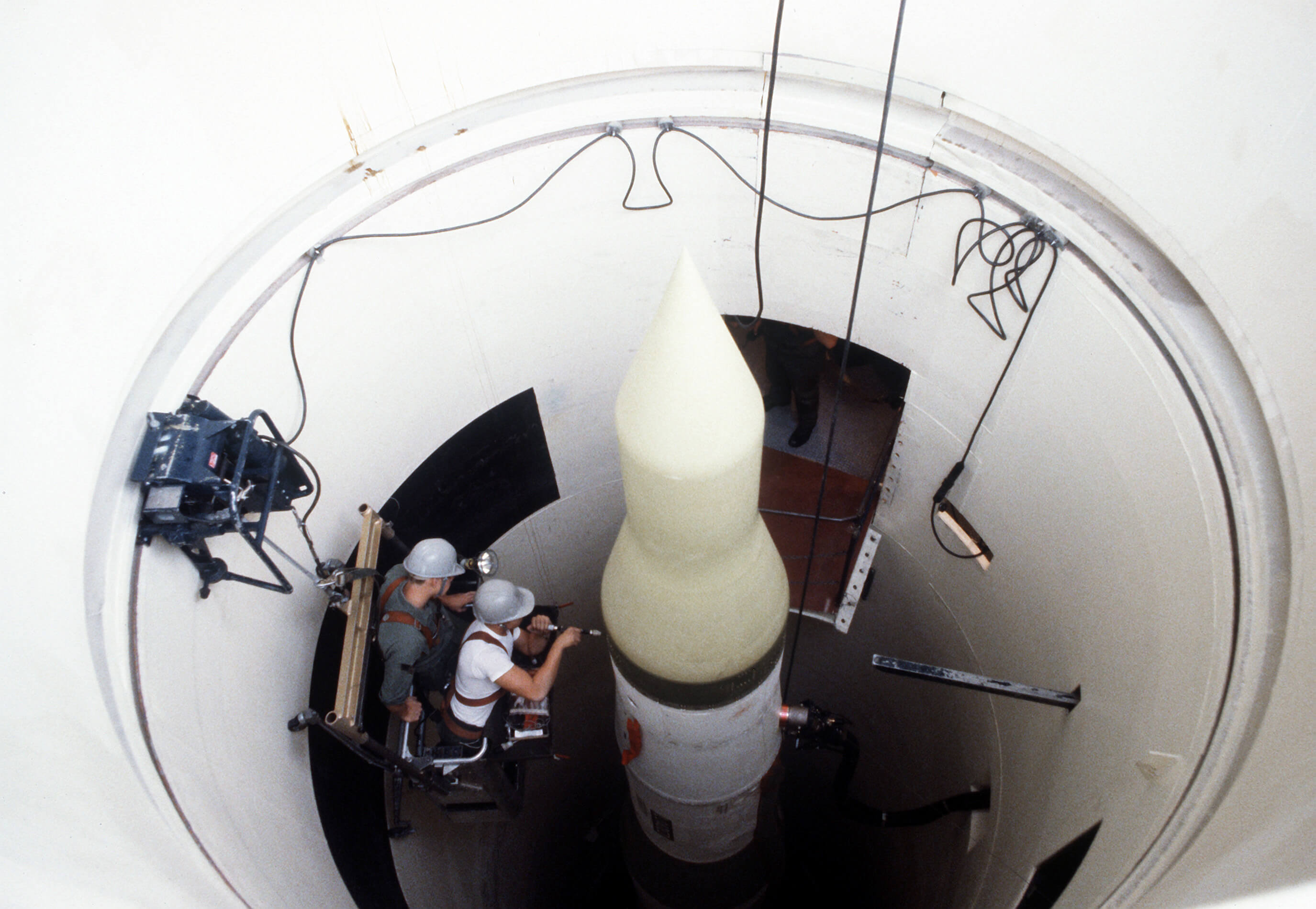Can Congress Bar Fully Autonomous Nuclear Command and Control?

Published by The Lawfare Institute
in Cooperation With

Sens. Edward Markey, Elizabeth Warren, Jeff Merkley, and Bernie Sanders recently released a draft bill to safeguard nuclear command and control from future policy changes that might allow an artificial intelligence (AI) system to make nuclear launch decisions. Specifically, the bill (which we term the Markey proposal) would prohibit the use of federal funds to use an autonomous weapons system that is not subject to meaningful human control to either launch a nuclear weapon or select or engage targets for the purposes of launching a nuclear weapon. The constraint set out in the bill is not limited to first use; it would apply to any use of a fully autonomous system to launch a nuclear weapon, even in a situation in which the United States was acting defensively after having been struck first.
Many observers have called for this type of restriction as a matter of policy. Indeed, current U.S. policy seems to preclude the introduction of autonomy into nuclear command and control systems. In February 2023, the U.S. government proposed a political declaration that included the position that “States should maintain human control and involvement for all actions critical to informing and executing sovereign decisions concerning nuclear weapons employment.”
Whatever the policy merits or risks, few commentators have analyzed in detail the constitutional questions that such legislation raises. One line of objection—an argument that is often raised against any limits on nuclear launch—is that this legislative proposal would unconstitutionally interfere with the president’s tactical decision-making as commander in chief. Another more interesting argument is that this legislative proposal would unconstitutionally constrain the commander in chief’s control of the chain of command.
This piece does not attempt to resolve how a debate between Congress and the executive branch would play out if the president were presented with a bill such as the Markey proposal. Instead, it sets forth some of the constitutional arguments that each side likely would make. Although we focus here on the nuclear launch issue, similar issues will arise if Congress attempts to restrict other types of military AI decision-making.
Tactics vs. Policy: The Constitutional Debate
Proposals like Markey’s are likely to raise the usual constitutional pushback from those who take a broad view of executive war powers. That view typically includes the idea that Congress may not regulate “tactical” or “operational” decision-making by the president. The basic argument is that the president’s role as commander in chief contains some indefeasible power to determine the specific tactics that the U.S. military should use to fight a particular conflict. The Supreme Court has offered snippets of its view on this in some cases, stating in Fleming v. Page that “[a]s commander-in-chief, [the president] is authorized to direct the movements of the naval and military forces placed by law at his command, and to employ them in the manner he may deem most effectual.” But it is difficult to identify which types of statutes intrude on that core power.
The George W. Bush administration’s Justice Department initially staked out the extreme position that Congress was disabled constitutionally from regulating “global war on terror” activities such as detention and interrogation, because these activities were akin to battlefield tactics. Later, however, it pulled back on this position. The Obama administration took the position that certain prohibitions on transferring detainees from Guantanamo might violate the separation of powers, as did the Trump administration. The same principle might seem to preclude Congress from legislatively restricting the president’s freedom of action as to whether—and especially how best—to use a particular weapon in the military arsenal.
Those supporting the Markey proposal might argue, to the contrary, that this is not a congressional intrusion into specific tactical or operational decision-making but rather a policy decision to bar any use of a nuclear weapon system that has a particular functionality—in this case, the ability to launch itself autonomously. According to this logic, if Congress may decide whether or not to authorize the president to build and maintain certain weapon systems (and to appropriate funds for those purposes), then putting some general restrictions on their use would constitute a lesser-included power. We found only one example where Congress legislatively restricted the president’s use of an existing weapon (anti-personnel mines), a provision that Congress ultimately repealed before it triggered a change in the executive branch’s use of the weapon. But while Congress has not previously legislated limits on how the president may launch nuclear weapons, it has regulated since the early days of the U.S. nuclear arsenal how the nuclear weapons would be handled and maintained in the interim. The 1946 Atomic Energy Act, for instance, originally placed custody of nuclear weapons with a civilian commission and provided that the president could direct the commission to transfer weapons to the military when he deemed it necessary for national defense. Congress therefore might point to this as historical evidence of its control over various aspects of the nuclear arsenal.
In general, we think arguments about the breadth of the president’s exclusive authorities to decide tactical and operational matters are often overstated. As David Barron and Marty Lederman have detailed, Congress probably does have significant power to regulate tactical and operational decision-making, and this could include decision-making around nuclear launches, though the precise boundaries of Congress’s power are not clear (in part because historically Congress hasn’t had much reason or desire to enact such restrictions).
In the Markey proposal, Congress would be attempting to use its power of the purse—one of its most potent powers—to impose this restriction, though the executive branch would be quick to note that Congress cannot attach unconstitutional conditions on executive branch spending. However, there is another way that Congress could use its appropriations power to accomplish the same end, one that would probably be on stronger constitutional ground. Instead of prohibiting the use of funds to use an autonomous nuclear launch system, Congress might prohibit the spending of funds to develop one. This would help reframe the issue as one of Congress’s power—by virtue of its exclusive Article I powers to create military forces—to decide what weapon systems should or shouldn’t be in the military arsenal, rather than an issue of Congress’s power to limit how the president may use systems that are otherwise in that arsenal.
Putting aside such a reformulated funding restriction on development, we also note that although generic arguments about the constitutionality of statutes that directly implicate wartime decision-making might apply to any legislative restrictions on the use of military systems, the nuclear setting raises an additional wrinkle. Assume that the executive branch has already embedded autonomous functionality in the nuclear launch process. Even if a restrictive statute that mirrored the Markey proposal would be constitutional in most contexts, there might arguably be certain narrow and specific scenarios (based on imminence of the threat or attack) in which the president could constitutionally override those restrictions if he viewed those restrictions as imperiling the nation’s survival. And even if these constitutional override scenarios were narrow, there might be practical reasons why it would be difficult to design a nuclear launch system in a way that aligned precisely with those constitutional boundaries. That is, if the executive branch were to develop a nuclear launch system with an autonomous capacity to select the time, place, or use of the weapon, it might be hard to ensure that the autonomous feature was used only in those narrow scenarios.
Chain of Command: The Constitutional Debate
Another interesting constitutional question is whether regulating the delegation of decision-making to machines exceeds Congress’s power to control the chain of command and unconstitutionally interferes with the president’s ability to delegate his wartime authorities.
The executive branch has long taken the view that the president’s authority as commander in chief includes “the power to dispose of troops and equipment in such a manner and on such duties as best to promote the safety of the country.” In a memorandum to President Buchanan in 1860, Attorney General Jeremiah Black stated, “As Commander-in-Chief of the army, it is your right to decide according to your own judgment what officer shall perform any particular duty.” In a more modern analysis about the constitutionality of a proposed 1996 statute that would have prevented the president from placing U.S. forces under United Nations operational control, the Office of Legal Counsel (OLC) opined:
It is for the President alone, as Commander-in-Chief, to make the choice of the particular personnel who are to exercise operational and tactical command functions over the U.S. Armed Forces. True, Congress has the power to lay down general rules creating and regulating “the framework of the Military Establishment,” Chappell v. Wallace, 462 U.S. 296, 301 (1983), but such framework rules may not unduly constrain or inhibit the President’s authority to make and to implement the decisions that he deems necessary or advisable for the successful conduct of military missions in the field, including the choice of particular persons to perform specific command functions in those missions.
Applying this line of opinions to the Markey proposal, the executive branch very likely would conclude that the president has the constitutional authority to choose any actor he wants to perform specific military functions. Logically, perhaps this need not be a human actor; it could include an artificially intelligent machine.
Supporters of the Markey proposal might argue that the proposal would serve to protect, not undercut, the president’s chain of command. That is, defenders of the legislative restriction could argue that it ensures the president’s authority as commander in chief to make strategic and tactical decisions about the weapon’s use, rather than allowing a machine to make that decision for him. They might also point to some historical understanding that Congress had a role to play in regulating whether and when the president could divest the United States of complete custody of U.S. nuclear weapons and might analogize to an ability to limit transfers of control of nuclear weapons to an autonomous system.
There are many examples in which Congress has assigned important duties to particular military officers or authorized or required particular officers to make certain decisions. For example, in recent years Congress has conditioned troop withdrawals from South Korea on a certification from the secretary of defense; prohibited the executive branch from transferring detainees from Guantanamo without a certification from the secretary of defense; and authorized the National Command Authority (i.e., the president and the secretary of defense together) to undertake certain cyber operations through the commander of U.S. Cyber Command.
In none of those cases, however, did Congress impose on the president a requirement that he himself retain decision-making authority in a particular military operation. That is, Congress apparently has not purported to prevent the president from delegating to subordinate military officers a particular statutory duty. In a 1981 opinion, the OLC conceded that Congress has the power to do so. But that same opinion unsurprisingly stated that the president has broad authority to delegate functions vested in him by law, with some exceptions such as the power to pardon. The opinion notes that the president’s powers as commander in chief are “nondelegable” but then continues:
To conclude that the President may not delegate his ultimate constitutional responsibilities as Commander-in-Chief is not to suggest that he is the only officer of the government who may make military decisions in time of emergency, when immediate response may be necessary. The President may make formal or informal arrangements with his civilian and military subordinates, in order to ensure that the chain of command will function swiftly and effectively in time of crisis.
This suggests that if the president were acting only pursuant to statutory authorization when launching a nuclear weapon, Congress could preclude him from delegating that power. But if the president were relying on his implied and independent Article II powers in launching nuclear weapons to defend the country against an attack, the president would be on stronger ground in arguing that Congress cannot prevent him from delegating those powers down to an autonomous system—a system that, in OLC’s words, might be designed specifically to “function swiftly and effectively in time of crisis.”
***
The delegation question is hard, and it is one that is likely to come up in other areas of military AI. Even if the Markey proposal were to gain momentum, the constitutional issues are unlikely to get hashed out clearly between the political branches. For example, were the proposal to make it into the 2024 National Defense Authorization Act, it’s entirely possible that the president would include a signing statement stating that the executive branch would only apply the restriction consistent with the president’s commander-in-chief powers, and issue a policy reflecting that the executive branch has no plans to use autonomous nuclear launch systems. This would essentially kick down the specific nuclear dispute down the road, but it may not be long before the issue arises again with other legislative efforts to restrict autonomous military decision-making.



.jpg?sfvrsn=5a43131e_9)

